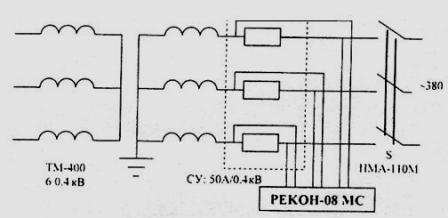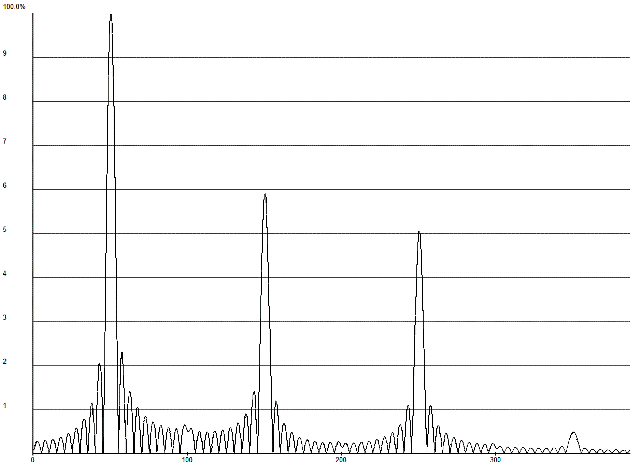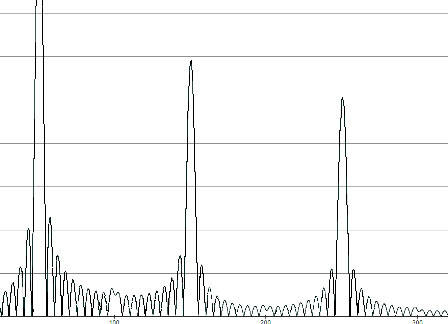Zubkoff Anton
Faculty: Electrotechnical
Chair: Electrical Systems
Speciality: Electrical Systems and Networks
Theme of master's work: Diagnostic criteria analysis of structural elements damages of the transformer magnetic core
Scientific adviser: Rogozin G.G.
_______________________________________________
Diagnostic criteria analysis of structural elements damages
of the transformer magnetic core
Introduction
At this stage of energy development for power transformers have high demands for reliability and efficiency of the equipment. In this regard, a need for new ways to evaluate the condition of the equipment. This requires us to reduce the time of the control at a sufficiently high sensitivity to the most likely types of damage.
Currency subject
In practice, there are methods of diagnosing the magnetic systems of power transformers. But they are laborious and have low accuracy. An indication of damage to the magnetic system is to increase the current and no-load losses. The nature of damage associated with the local fire in the steel, insulation failure between the sheets of magnetic steel and insulation damage tightening bolts.
In connection with the improvement of production processes, the complexity and high cost of manufacturing and repair of transformers, the issue of creating new forms of control is particularly important.
The purpose and objectives of the study
The aim is to develop a theory and study a new method of experimental determination of electromagnetic parameters of power transformers, which is characterized by increased accuracy of identification of the magnetic system of power transformer and includes a experimental basis in the form of transient functions, reflecting the results of simulation of damage of structural elements of the power transformer and the resulting matrix of symptoms for diagnosing the technical condition of the latter.
Objective
Analysis of existing methods of diagnosis and control of the magnetic systems of power transformers, in particular, methods for determining the electromagnetic parameters of power transformers and suggestions to improve the above methods.
The main objectives of:
— development of methods for the synthesis of the equivalent magnetic circuit of the transformer equivalent circuit for the experimental transition functions;
— development of methods for experimental simulation of typical damage to the components of the magnetic system of the transformer;
— identification of experimental transfer function of the transformer when simulating damage in the magnetic system;
— determination of indicators of recognition of simulated images of the magnetic system in time and frequency domains of the state vectors;
— develop a matrix of symptoms for diagnosing the state of structural elements of the magnetic system of the transformer;
— study the errors of the method.
Expected practical results
Using the finished work is carried out by using the method developed for the control of the magnetic system of power transformers (with increasing temperature structural elements, worked of the gas protection, abnormal drone, changing the magnetization current no-load, certain results of chemical analysis of dissolved gases in transformer oil, a possible bias in the windings cutting short circuit) and assess changes in no-load losses.
The main content of
Among the characteristic damage of the magnetic system should include the local fire in steel with burn-in of steel sheets laminated frame, the closure of individual sheets to each other, damage to insulation tie rod magnetic studs. The presence of insulation defects (varnish) between the sheets or deterioration of its insulating properties leads to a reduction in use of the resistivity interfoliaceous insulation package and an increase in magnetic losses idling transformer.
Meanwhile, the control of the state interfoliaceous isolation associated with the special test [1].
The complexity and time-consuming to carry out tests indicate the presence of a specific problem not only with the control efficiency of the magnetic system, but also to prevent the growth of the energy loss in the system during operation of transformers. Most of the transformers in the power systems of Ukraine has been in operation for decades and the sequence of their replacement should be subject, in particular, and the requirement to reduce energy loss in its transformation.
Implementing a new system of diagnosing the possibility of recognition must be supported not only increase the no-load loss, and the establishment of a damaged structural component of the magnetic system of the transformer (steel laminated frame, clamp bolts, offset coils as a result of electrodynamic effects in cutting short circuit).
Research result
Experiments were carried out fixing the decay curves of direct current in the winding 0,4 kV transformer TM-400 6/0,4 kV. Experiments damping constant current were carried out with initial values of the DC order of 10 A.
Registration process of decay of free current carried out using a multichannel recording device such as Πεκξν-08ΜΡ. The values of the currents in phase windings of the transformer low voltage expressed as a fraction of their initial values. Time of observation of the transition process was limited to 6 seconds. The frequency of polling signal is set to 10 kHz. In approximating the experimental curves of the sum of exponential components was assumed equal division of time coordinates of the curve of current within the individual intervals, set according to preliminary experiments.
A method to carry out diagnostic experiments with the inclusion of an no-load transformer at the rated voltage.
Damage to the magnetic system of the transformer influence change switching current of no-load duty in time interval, caused by the growth of magnetic flux in the linear part of magnetization curve.
Physical modeling of the damage appeared closed magnetic circuits, resulting reactance decreases at constant active. This leads to an increase in the damping coefficient aperiodic component of the flow, as well as in proportion to his induction, the magnetic field [1].
To determine the aperiodic component in the moment of switching transformer, the harmonic components of current in the no-load steady state duty uses data obtained from the experiment conducted in accordance with the scheme Fig.1

Further processing of the current phase A is to approximate the curves that encircle the current to a minimum and maximum [3], or to obtain analytical expressions for the current change in time, which give the least deviation of the values of these currents from their experimental values for the relevant time. Approximation is done using the standard program CurveExpert 1.34.
Availability of analytical expressions for the curves, the envelope current of phase A of minima and maxima (excluding the current steady state) will calculate the aperiodic component of phase A well-known formula:

The analytical expression which approximates the calculated dependence of iA(t) represents the sum of three decaying exponentials [4]:
The parameters of individual components (their number, the initial values and damping coefficients) can be used to assess changes in the state of the magnetic circuit of the transformer.
Figure 2 shows the spectral analysis of the current in the phase A transformer TM-400 6/0,4 kV in no-load steady state duty.


Conclusion
The diagnostic approaches to the analysis of damage to structural elements of the magnetic circuit of the transformer according to the inclusion of an no-load transformer at the rated voltage.
The basic method of diagnosing the magnetic systems transformers electricity distribution networks in major repairs.
REFERENCES
1. Farban S.A. Bun A.J. Remont i modernizacija transformatorov. M.-L.: Energija, 1970. - 447ρ.
2. Polivanov K.M. Ferromagnetiki. Osnovy teorii tehnicheskogo primenenija. M.-L.:GJeI, 1957. 248s.
3. Kazovskij E.Ja. Perhodnye processy v mashinah peremennogo toka. M.-L.: Izd-vo AN SSSR, 1962. 548 s.
4. Rogozin G.G., Pechurkin Ju.I. Primenenie impul'snogo metoda dlja opredelenija jelektromagnitnyh parametrov massivnyh konstrukcij jelementov rotora turbogeneratora // Jelektrotehnika. 1992, Ή 6-7. S.16-21.
5. ANSYS, Electromagnetic Field Analysis Guide, Release 5.5, September 1998.
6. Tu Dzh., Gonsales R. Principy raspoznavanija obrazov. - M.: Mir, 1978. - 411 s.
7. Normy ispytanija jelektrooborudovanija i apparatov jelektroustanovok potrebitelej. Glavgosjenergonadzor - M.: Jenergoizdat, 1982, 104s.
8. The article in website "Vibro-centr" http://www.vibrocenter.ru/tdm.htm
9. Zhuravlev A.N., Popov G.V. Tehnologija teplovizionnogo kontrolja v diagnostike silovyh transformatorov // Vestnik IGJeU. 2001. Ή 1. The article in website Transform.ru
10. Popov G.V. Ob ocenke sostojanija silovyh transformatorov po rezul'tatam hromotograficheskogo analiza. Stat'ja razmewena na sajte Transform.ru
When writing this abstract master work was not completed. The final work can be obtained from the author or supervisor since December 2010.
